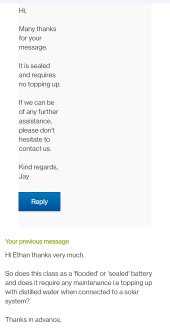Translation:
"For liability reasons because other people have been stupid, our solicitors recommend you NOT open the batteries."
Get a face shield and rubber gloves to be safe but the standard is they go a little heavy on the electrolyte to avoid people opening them up.
Just a little over the plates is all you need, if it's pouring out the top it's too much.

Or, just ride it until they die and buy new ones in a few years, they're cheap enough to not hurt the wallet that bad.
Safety and being comfortable with chemicals is more important than the couple hundred quid it costs to replace them. If you're not comfortable opening them up, then DON'T!

Or do it after you've used them up since they're expendable at that point anyways and you can't really hurt them.





